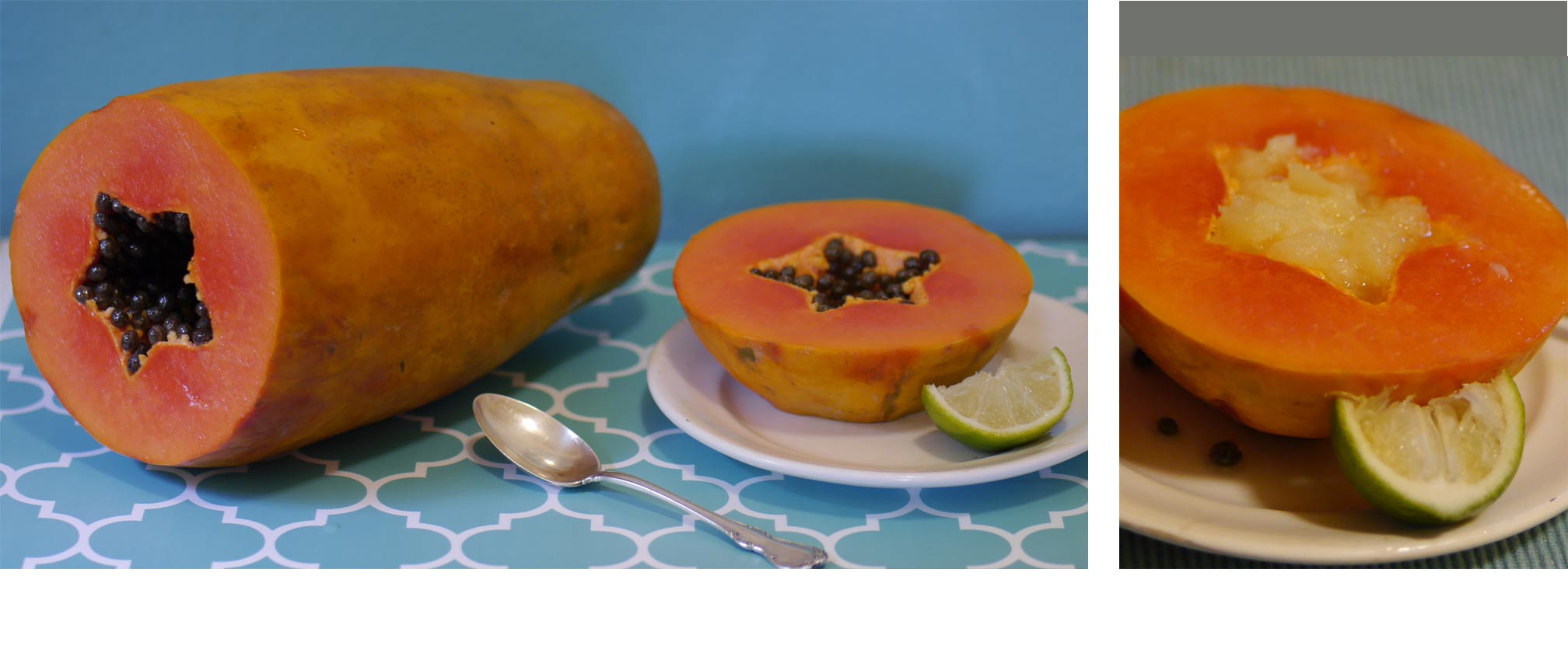annebarone.com
French Chic & Slim

|| 12 May 2019
Passion for Papaya
One of the many culinary delights I discovered living in West Africa was papaya. From my first sweet juicy exotic tasting of this golden orange fruit I developed a lifelong passion for papaya.
Alas, not all papayas that grow in the various regions of the world equal the taste of West African papayas. And when I returned to live in the USA, I discovered that papayas, when available, were expensive — and usually had been picked green. Very green.
Occasionally I would splurge and buy one of the small Hawaiian papayas if I found one that looked ripe — and if I was feeling extravagant. In my supermarkets these Hawaiian-grown papaya were usually priced at $3 to $4 each. In West Africa I had paid the equivalent of a few pennies for a papaya 3 or 4 times the size. And in one house I lived in West Africa. there was a large papaya tree in the garden that produced wonderful fruit. Not even when one fell from the tree and splattered onto my shoulder and required a change of clothes was my enthusiasm for the fruit dimmed.
When I was living in Corpus Christi writing the Chic & Slim books, my H-E-B supermarket began importing the large Mexican papayas. While I found their taste more like what you might produce if you crossed an acorn squash with a honeydew melon, still they were papaya. And the H-E-B price was very reasonable. So I was able to enjoy papaya frequently.
A Mexican friend of my son showed me how his family ate papaya: peel the fruit, remove the seeds, chop the papaya and blend it with the flesh of a peeled and seeded orange in a blender.
But I still prefer just a slice of papaya with a squeeze of fresh lime. If I buy a not-very-sweet Mexican papaya, I sometimes fill the center with crushed pineapple and then squeeze on the lime juice.
These Mexican papaya I have been buying recently are sweeter and more melon-like than previously. At first I was put off by the $1.50/pound price. The papaya are large. And though I usually have to pay somewhere between $4.50 to $8 for one papaya, I finally realized that the price was the same per pound price as I was paying for Bosc pears or Gala apples.
You Can Eat The Seeds — Maybe
Years ago I read that papaya seeds were edible and could be added to a salad to substitute for capers. I tried this. But the papaya seeds were too peppery for my taste. (And did not taste to me at all like capers.) To me, eating papaya seeds was too much like eating slightly slimy pepper corns. I have since read that your digestive system can become very unhappy if you eat more than a few papaya seeds, perhaps a teaspoon, per day.
The fruit of the papaya has many health benefits — not the least of which is its richness in potassium and Vitamin C. Papaya has a long reputation as being of benefit for digestive problems. One of my friends in Corpus Christi told me that in the 1930s, one of her cousins was suffering from severe digestive problems. Her South Texas doctor recommended that she go to a papaya-growing area of Mexico and live there for two months and eat papaya every day. According to my friend, this treatment cured the cousin’s digestive problems.
For someone like me with a passion for papaya, that "eat papaya every day" prescription sounds like wonderful medicine.
be chic, stay slim — Anne Barone
Image : Mexican papaya. Papaya on right filled with crushed pineapple